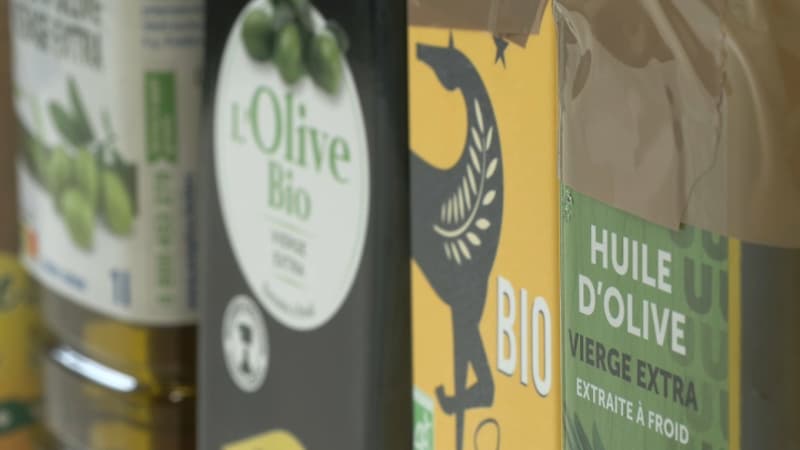Olive oil is often rented for its health benefits. If certain properties are undeniable, such as the asset on cardiovascular health, the magazine 60 million consumers warns the presence of pollutants in many bottles sold for most in supermarkets.
The organization analyzed 22 additional virgin olive oils (that is, directly from the fruit by simple or centrifugal mechanical pressure) and indicates a disappointment in “its cleaning.” All analyzed oils contain plasticizers and hydrocarbons residues.
Plastifiers, however, prohibited in food
“The phthalates have been found in the 22 olive oils,” Patricia Flesopoulos, a journalist of 60 million consumers, told BFMTV. These phthalates are plasticizing that are found in “tanks, canvases or pipes used during storage or transport.”
They migrate to olive oil during their production or transport because it is a fatty body that “absorbs these contaminants,” says Patricia Flesopoulos.
Depending on this study, organic or conventional, oils contain one to three phthalates or plasticizers and none of the references escapes it. However, “a growing number of studies demonstrates its health risk, especially as endocrine disruptors,” warns the magazine.
Some tested oils contain up to 4.8 mg/kg of DEHP. However, European regulations prohibit the use of materials that contain phthalates in the production and storage chain of the fatty body, such as olive oil.
“However, these are still acceptable contained, knowing that a few years ago, they could reach 20 to 30 mg/kg,” says Franck Dejean, head of the Department of Analysis and Experience of the Institute of Fats and Related Products (Iterg).
According to 60 million consumers, “phthalates are mainly found in virgin oils to know how those of the olive or nuts, often produced in small structures that do not always have the means to change their equipment.”
Hydrocarbons beyond the threshold
More problematic, olive oils also contain MOSH (saturated hydrocarbons with mineral oils) and moah (aromatic hydrocarbons of mineral oils). These are derived from oil, used in particular as lubricants for engines.
As the study authors explain, by contaminating food, the first can accumulate in the liver and lymphoid system, while the second, moah, has carcinogenic properties.
As with the plasticizers, these pollutants have a great affinity for fatty substances and oil. Contamination can be done during olive tree collection, crushing or transport, particularly for a tractor oil leak, crusher or truck.
“Avoid migration, therefore, requires great precautions, throughout the manufacturing chain (…) Unfortunately, some manufacturers do not seem vigilant enough,” deplores 60 million consumers.
In fact, some tested olive oils contain 10 mg/kg of Moah. It is five times more than the estimated limit as acceptable by the European Union.
“Do not trust prices”
Therefore, 60 million consumers demand the surveillance of manufacturers. “These are not in huge amounts, so there is an impact risk in health if it consumes a lot of long term,” Patricia Flesopoulos temperaments.
The journalist also explains that there are no important differences between organic olive oils or conventional -produced olive oils, that is, with the use of pesticides.
In addition, she emphasizes that “it should not be achieved at prices, except really low prices.” In fact, with respect to contamination with hydrocarbons or phthalates, all oils are affected, even the very expensive ones.
Source: BFM TV


